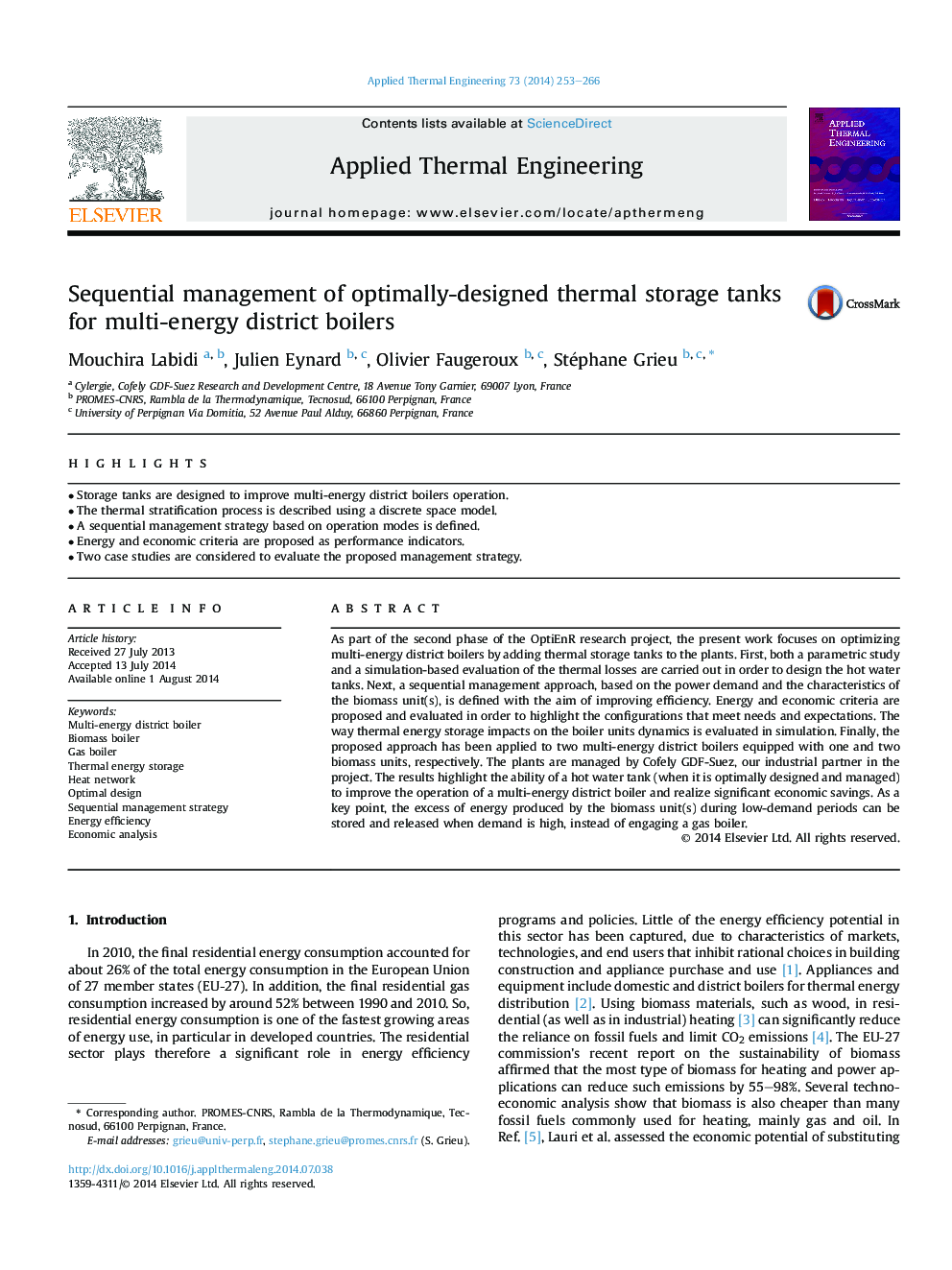| Article ID | Journal | Published Year | Pages | File Type |
|---|---|---|---|---|
| 645750 | Applied Thermal Engineering | 2014 | 14 Pages |
•Storage tanks are designed to improve multi-energy district boilers operation.•The thermal stratification process is described using a discrete space model.•A sequential management strategy based on operation modes is defined.•Energy and economic criteria are proposed as performance indicators.•Two case studies are considered to evaluate the proposed management strategy.
As part of the second phase of the OptiEnR research project, the present work focuses on optimizing multi-energy district boilers by adding thermal storage tanks to the plants. First, both a parametric study and a simulation-based evaluation of the thermal losses are carried out in order to design the hot water tanks. Next, a sequential management approach, based on the power demand and the characteristics of the biomass unit(s), is defined with the aim of improving efficiency. Energy and economic criteria are proposed and evaluated in order to highlight the configurations that meet needs and expectations. The way thermal energy storage impacts on the boiler units dynamics is evaluated in simulation. Finally, the proposed approach has been applied to two multi-energy district boilers equipped with one and two biomass units, respectively. The plants are managed by Cofely GDF-Suez, our industrial partner in the project. The results highlight the ability of a hot water tank (when it is optimally designed and managed) to improve the operation of a multi-energy district boiler and realize significant economic savings. As a key point, the excess of energy produced by the biomass unit(s) during low-demand periods can be stored and released when demand is high, instead of engaging a gas boiler.
